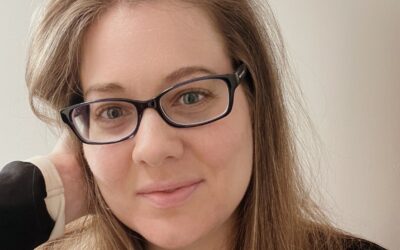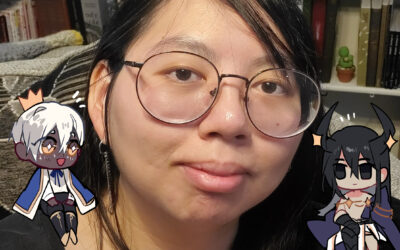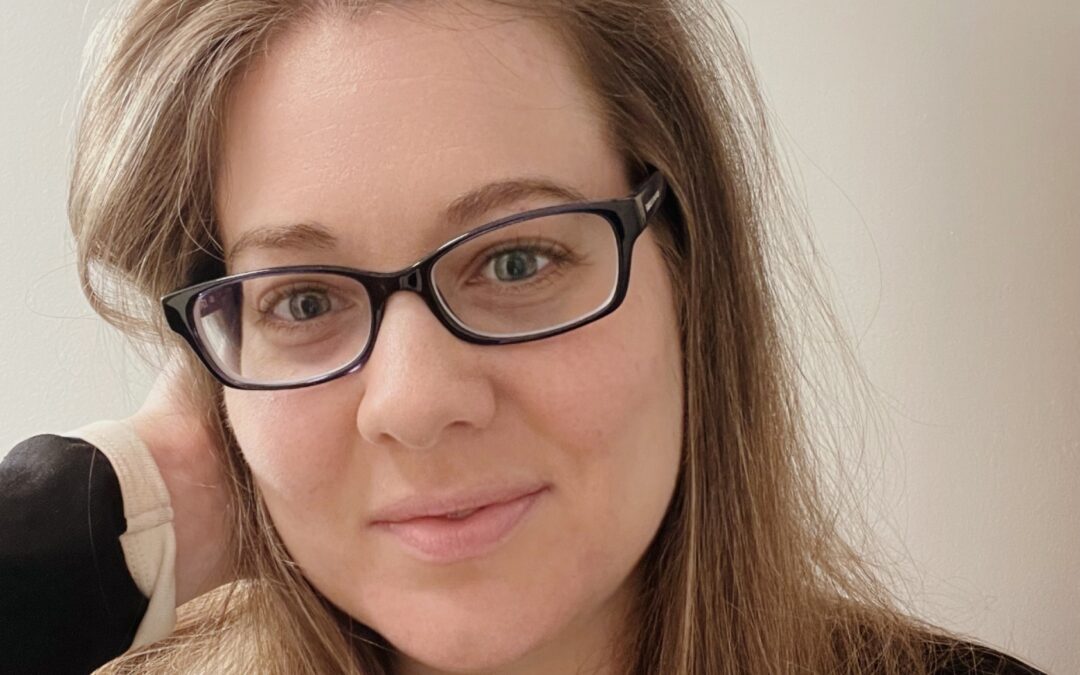Harry Woodgate (pronouns: they/them) is an award-winning author and illustrator who has worked with clients including National Book Tokens, Google, The Sunday Times Magazine, Harper Collins, Simon & Schuster, Walker Books, Knights Of, Andersen Press, Bloomsbury, The Washington Post and Penguin Random House.
Their debut author-illustrator title, Grandad’s Camper, won the Waterstones Children’s Book Prize Best Illustrated Book 2022 and a Stonewall Book Award Honor from the American Library Association, as well as being shortlisted for the inaugural Polari Children’s & YA Prize 2022 and nominated for the CILIP Yoto Kate Greenaway Award. Their other books include Grandad’s Pride, Timid, Little Glow, Shine Like The Stars, My First Baking Book, and The Very Merry Murder Club.
Harry is passionate about writing and illustrating diverse, inclusive stories that inspire children to be inquisitive, creative, kind and proud of what makes them unique. When they’re not making books, they love writing music, cycling, baking, and exploring independent coffee shops, gardens and bookstores.
I had the opportunity to interview Harry, which you can read below.
CW: Discussion of fictional portrayal of grandparent’s passing.
First of all, welcome to Geeks OUT! Could you tell us a little about yourself?
I’m Harry Woodgate, my pronouns are they/them, and I’m an author and illustrator. I write and illustrate diverse, inclusive stories that inspire young readers to be inquisitive, creative, kind, and proud of what makes them unique. When I’m not illustrating or writing, I love music, cycling, baking, and exploring independent coffee shops, gardens and bookstores.
What can you tell us about one of your most recent projects, Grandad’s Camper, as well as its follow-up, Grandad’s Pride? What was the inspiration for this story?
Grandad’s Camper is my debut author-illustrator picture book. It’s about a girl called Milly, who loves visiting her Grandad by the seaside and listening to all the adventures he went on with his late husband Gramps in their vintage camper van. Now that Gramps is no longer around, the camper van is hidden away, so Milly comes up with a plan to cheer Grandad up and make new memories together.
It was inspired by my university research into LGBTQ+ representation in illustrated children’s literature, which revealed a lack of older queer characters as well as a focus on ‘coming out’ stories, sometimes to the exclusion of other narratives. It’s also inspired by various people, places and memories in my own life that I wanted to honour and celebrate.
I feel incredibly grateful that it won the Waterstones Children’s Book Prize 2022 for Best Illustrated Book, and a Stonewall Book Award Honor from the ALA. That was such a confidence boost and, I hope, validation for readers and other book creators that LGBTQ+ stories are important and wanted.
The sequel, Grandad’s Pride, follows Grandad and Milly as they rally their seaside community to organize a village Pride parade. After Grandad’s Camper published, I got such a wonderful response from readers, teachers and families, but every day I was seeing more and more damaging media narratives and discriminatory legislation both in the US and the UK. Making the book was an opportunity to ask, ‘how can we define ourselves and our communities through our joy rather than our suffering?’
How did you find yourself getting into storytelling, particularly picture books? What drew you to the medium?
I’ve always wanted to be a storyteller or artist of some description. Picture books are particularly interesting because they are typically our first encounter with literature and the world beyond what we know as children, so they hold a great deal of creative and emotional potential for the illustrator and writer. You have to interrogate the biases you have built up over time and place yourself into a state of openness and curiosity, which I find very rewarding.
They’re also one of the few mainstream formats that relies so heavily on illustration to tell the story, which is appealing as a visual artist because you get to play with how word and image interact. I’m glad we’re now seeing illustrated books and comics becoming more popular for older age groups, because visual literacy is so important and that doesn’t change when you transition from picture books to longer prose fiction.
As a writer of diverse LGBTQ+ picture books, what do you think is the significance of queer representation is, especially for younger audiences?
Many educators talk about children’s books as mirrors, windows and doors. Seeing yourself as well as those who are different to you reflected in stories unlocks countless possible futures, vocabularies, and ways of being. And when there are prolonged, targeted campaigns in politics and the media to deconstruct, define and demonise your existence – sometimes before you even have the words to understand it yourself – having access to stories centred around joy, curiosity and compassion are essential.

How would you describe your creative process?
Typically, when I’m writing, I try to complete a first draft before I begin illustrating, so that I have a reasonable idea of where the story is going. After that, the two tend to inform one another organically.
I create most of my illustrations using a combination of digital and traditional techniques, however I’m currently working on a few new projects which are almost entirely traditionally illustrated. Sometimes working digitally removes the unpredictability which is essential in creative work: being able to edit and refine and undo your mistakes as many times as you like reduces the opportunity for things to go wrong, and that is so often the space where exciting discoveries are made.
As a creative, who or what would you say are some of your greatest creative influences and/or sources of inspiration?
I’m inspired by all the talented writers and illustrators making books today, and the wonderful friends I’ve made on my own publishing journey. I find inspiration in films, music, nature, science, family. I struggle to come up with a more precise answer here because I think when it comes to inspiration, I’m a bit like a hungry caterpillar, or maybe a magpie collecting as many shiny things as it can.
What are some of your favorite elements of writing/illustrating? What are some of the most challenging?
My favourite and least favourite part of writing and illustrating, depending on how I’m feeling on any given day, is providing the care and attention each story requires to become the most compelling version of itself. The long hours spent imagining, sketching, typing, editing, and creating worlds and characters from words and brushstrokes. It’s a process that often feels meditative, exciting, invigorating, cathartic, thought-provoking, and just as often tedious and incredibly frustrating. The results are usually worth it, though.
Besides your work as an author/illustrator what are some things you would want readers to know about you?
Not much, I’m afraid! I’m quite a reserved person in general, and keeping my work and personal life separate helps me take care of my mental health and ensure that I can keep making books for as long as I’m able.
What’s a question you haven’t been asked yet but wish you were (and the answer to that question)?
Poppadoms or bread? Poppadoms or bread? The answer, of course, is both.
Are there any projects you are working on or thinking about that you are able to discuss?
Currently I’m working on the second instalment of my picture book series My Small World with author Caryl Hart, which has been great fun to illustrate. I’m also working on my next author-illustrator picture book, and the first draft of an illustrated middle grade series, which if it sells will be my first time writing for a slightly older age group, so that’s exciting. Everything else is under wraps for the time being!
What advice might you have to give to aspiring creatives, to both those interested in making their own picture book?
Think about what makes your work and voice unique and try to build around that, rather than writing what you think will sell or what others want to read. Authentic stories are essential, and making books is a long process, so you may as well enjoy it.
Also, word and image are a means of connecting with readers, not just a set of grammatical and visual rules to be learned. Try not to worry if your spelling isn’t great, or if your lines are always a bit wonky. If you can tell a good story, that’s what counts. The rest can follow in good time.
Some more practical tips would be to seek out a community of writers and illustrators to share the highs and lows of your publishing journey with. It can be quite solitary at times so this can make a huge difference. Also, finding an agent who understands you and your work, and who you really get on with, is so important. They’re there to help guide you through what can often be a bewildering industry, so finding the right fit for you both is essential.
Finally, what LGBTQ+ books/authors would you recommend to the readers of Geeks OUT?
Ian Eagleton. Jodie Lancet-Grant. LD Lapinski. Vicki Johnson. Bob Tregoning. Cynthia So. Lizzie Huxley-Jones. Akwaeki Emezi. Benjamin Dean. Lewis Hancox. All brilliant in their own ways!







0 Comments